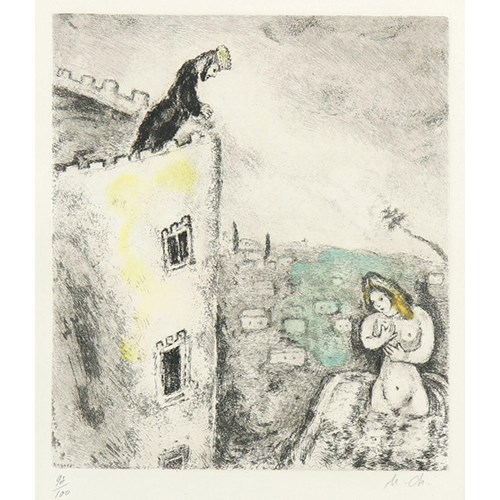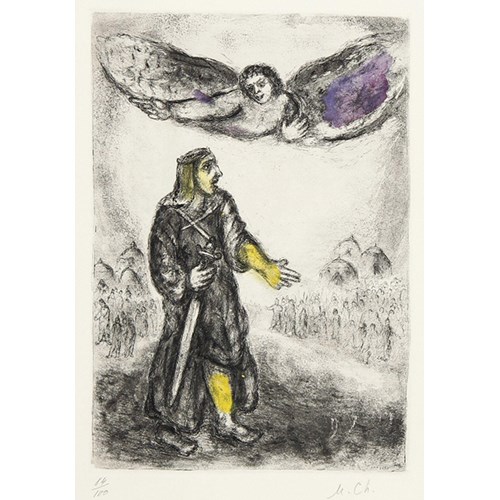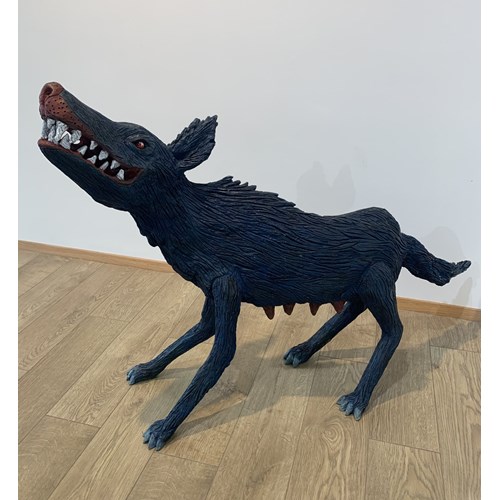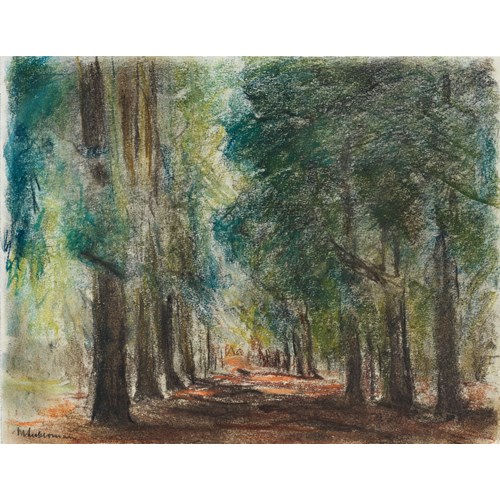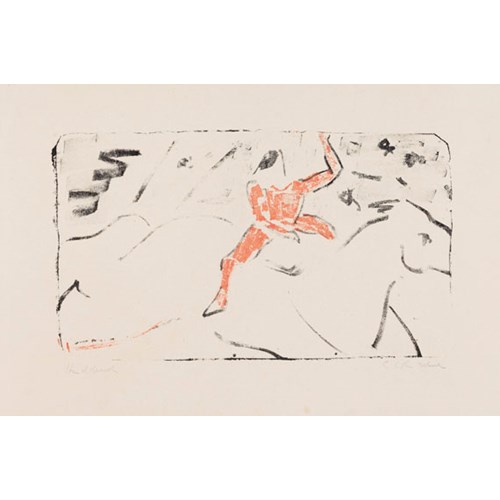Marketplace
San Mamete (Valsolda)
Hermann Hesse
San Mamete (Valsolda)
Date c. 1925
Epoque 20th century
Dimension 21.7 x 18 cm (8¹/₂ x 7¹/₈ inches)
Dimension avec cadre cm (15³/₄ x 13³/₄ x 1⁵/₈ inches)
‘He is a poet who paints and a painter who writes poetry. His use of colour is no less poetic than his use of words. Like fairy tales, they show the unreal as real and the real as unreal.’ (1) This passage by Volker Michels aptly describes Hermann Hesse's relationship to painting. The painter not only attempted to depict reality in his works, but also created a fairytale-like ideal in his pictures. In his watercolours, he was increasingly concerned with expressing his feelings at the sight of the motif and capturing the characteristics of the landscapes by means of reduction. In our two watercolours, too, the world of appearances surrounding the artist is paraphrased in a free manner. While clear geometric colour fields framed by delicate pencil lines dominate the friendly Italian landscape on the shores of Lake Lugano in ‘San Mamete (Valsolda)’, the artist created the work ‘Ticino Village Landscape’ in a more abstract, cubist creative phase. Here, the geometric, borderless colour forms merge into one another, overlapping in their pale shades and thus creating a colourful restlessness that captures the wild beauty of Ticino's nature. The choice of a friendly, bright colour scheme runs through Hesse's entire painterly oeuvre and could be due to the artist's state of mind at the time, who, repulsed by the horrors of war, sought a kind of peaceful counter-world in his paintings. Hesse only began to turn to painting at the age of 40 as a result of his traumatising experiences during the First World War. In particular, after moving to the small village of Montagnola near Lake Lugano, he created an extensive oeuvre of paintings as a self-taught artist, which primarily focused on the atmospheric mountain landscape of Ticino. Numerous poetry illustrations were also created during this time. At the beginning, Hesse dedicated the proceeds from his paintings to the welfare of prisoners of war, later he supported emigrants and needy colleagues with the sales of his illustrated poetry cycles. Both the delicate, almost ornamental bouquet of flowers in the poem ‘Stufen’ and the landscape in ‘Zur Erinnerung an Montagnola’, which resembles a postcard or a window detail, lend Hermann Hesse's handwritten poems a visual freshness and personal touch that lend his poetry an appropriate visual framework. 1 Volker Michels, ‘Farbe ist Leben - Hermann Hesse als Maler’, pp. 11-28, in: Galerie Ludorff, ‘Malerfreude - Hermann Hesse’, exhib. cat., Düsseldorf 2016, p. 19.
Date: c. 1925
Epoque: 20th century
Signature: ‘c. 1925’ dated, titled and ‘Bruno Hesse CH- 3399 Oschwand’ stamped on the old backing cardboard
Dimension: 21.7 x 18 cm (8¹/₂ x 7¹/₈ inches)
Provenance: Studio of the artist; private collection Switzerland (acquired directly from the artist), Galerie Ludorff, Düsseldorf, Germany, GMT Galerie Marc Triebold
Plus d'œuvres d'art de la Galerie





